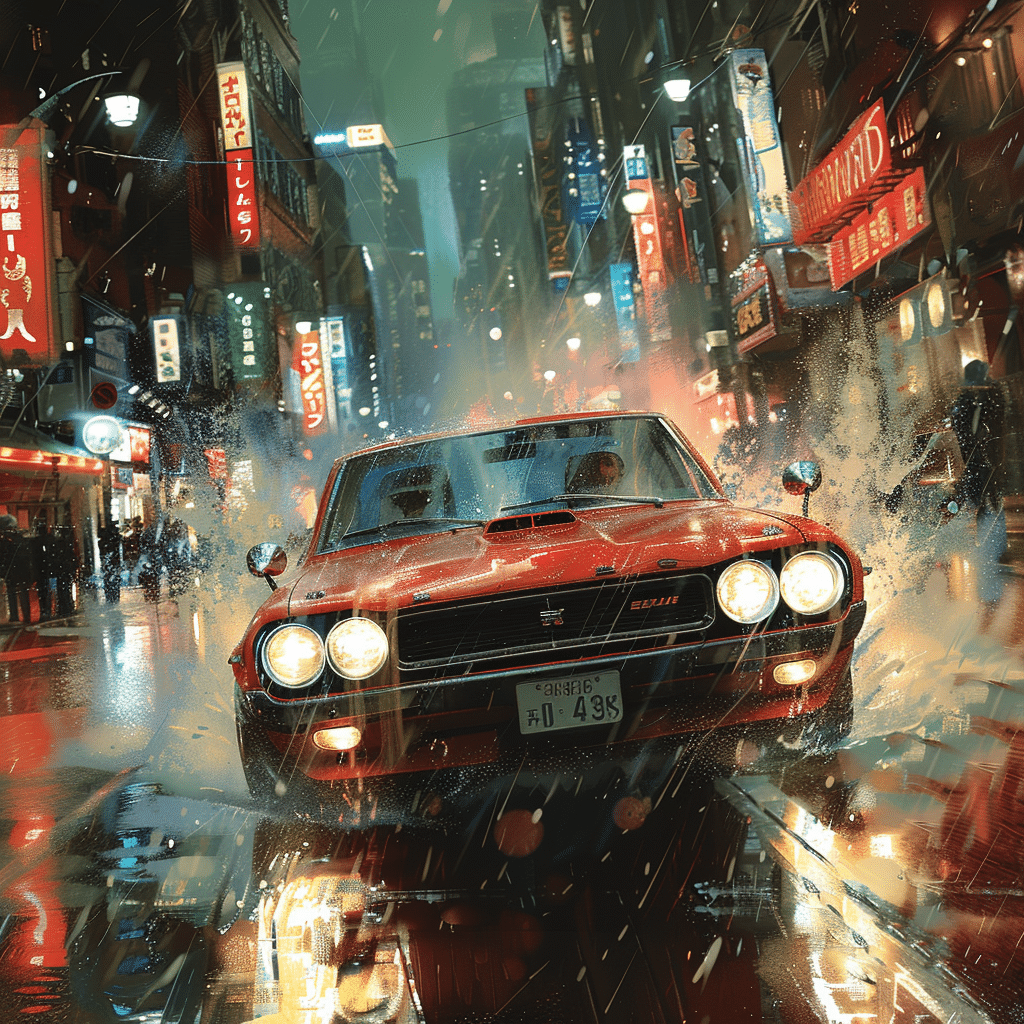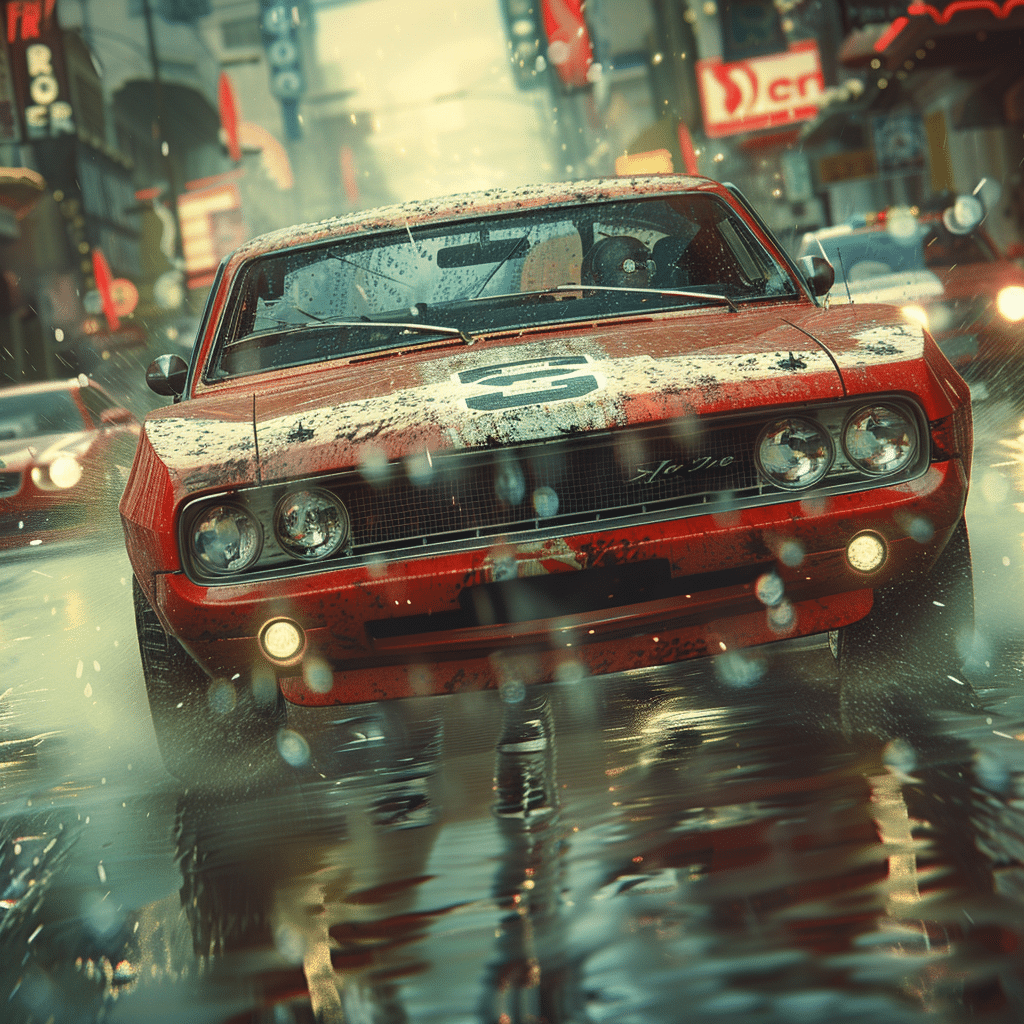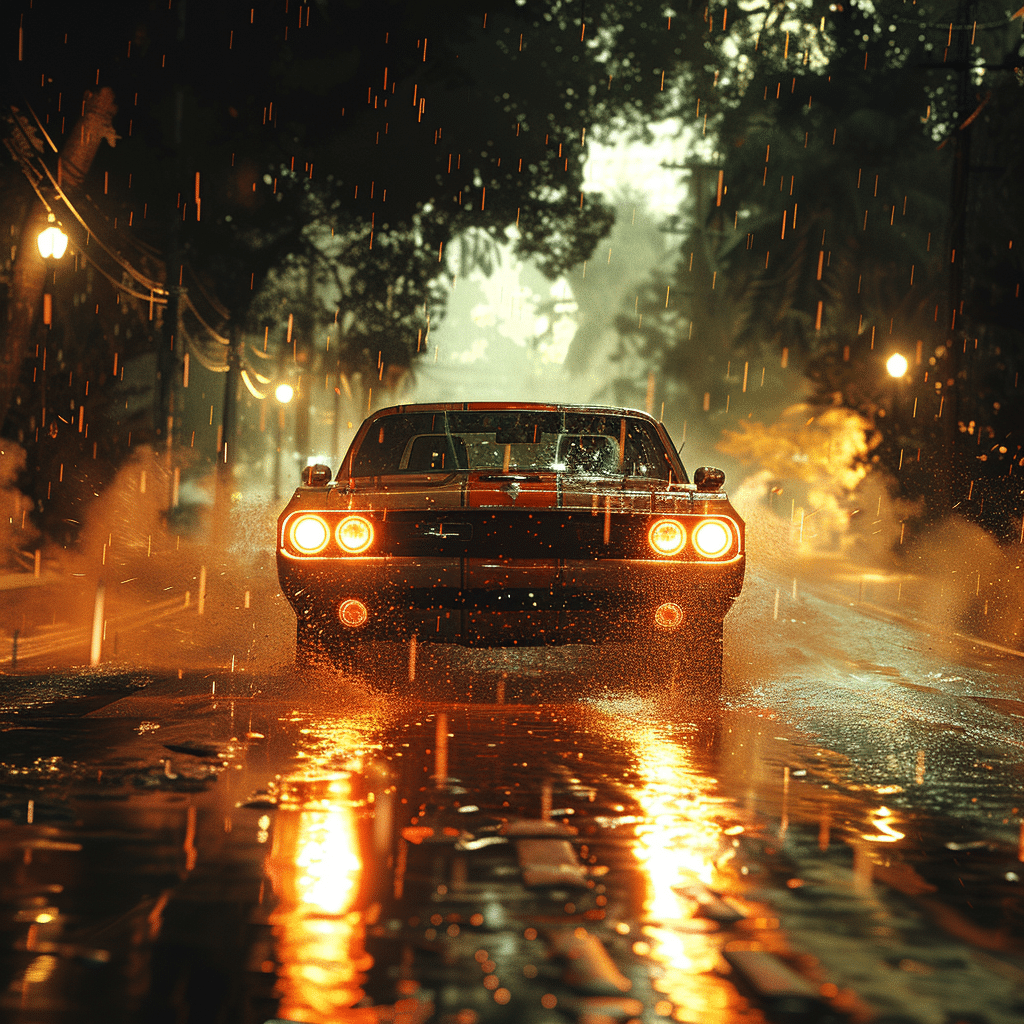Iconic Moments in Car Chase History
Car chases have long captivated audiences, making the heart race and the adrenaline pump. From Hollywood blockbusters to real-life dramas across TV screens, these high-octane pursuits embody a blend of danger, drama, and extraordinary driving skills.
Steve McQueen’s “Bullitt” Mustang Chase
The 1968 film “Bullitt” is often credited with creating the quintessential car chase scene. Steve McQueen’s portrayal of a determined San Francisco cop chasing down criminals in his 1968 Ford Mustang GT epitomizes cinematic bravado combined with visceral authenticity. The sequence is still studied by filmmakers for its realistic portrayal and lack of CGI. The car chase in “Bullitt” set the bar for future film chases, illustrating just how gripping and captivating a well-executed pursuit can be.
O.J. Simpson’s White Bronco
One of the most infamous real-life LA car chases occurred on June 17, 1994, when former NFL star O.J. Simpson led police on a low-speed pursuit through Los Angeles in a white Ford Bronco. Broadcast live, this chase captivated millions, prompting discussions on media ethics and the spectacle of real-time crime reporting. The pursuit highlighted the tension between the public’s right to know and the ethical obligations of news outlets. This event was a major turning point and is often cited as a cautionary tale on the implications of media frenzy during a car chase.
The Anatomy of a Modern Car Chase
Today’s high-speed pursuits are more than just raw horsepower and Hollywood glamour. Several technological, tactical, and ethical elements come into play, influencing how police chases unfold and conclude.
Advanced Police Technology
Modern police vehicles are equipped with cutting-edge technology like GPS tracking, automatic license plate readers, and sophisticated communication systems. These tools assist police in strategizing pursuits, tracking suspects with precision, and minimizing collateral damage.
Driver Training and Tactics
Officers undergo rigorous training to handle high-speed chases, focusing on mechanical control, psychological readiness, and situational assessment. This preparation ensures they can move through urban and rural landscapes while prioritizing public safety. Key techniques include:

| Category | Details |
|---|---|
| Definition | A car chase refers to a situation where one car is in rapid pursuit of another, often involving law enforcement attempting to detain or arrest suspects. |
| Key Aspects | – Typically involves police pursuit of suspects trying to escape. |
| – Can result from misdemeanors (e.g., traffic violations) or serious felonies (e.g., murder). | |
| Legal Implications | – Suspects face additional charges for evading arrest. |
| – High risk of property damage and injuries to bystanders. | |
| Historical Context | – Notable increase in high-speed police pursuits in recent decades. |
| – Often highlighted in news due to dramatic nature and potential dangers. | |
| Famous Incidents | – O.J. Simpson’s 1994 car chase in a white Ford Bronco in Los Angeles. |
| – Numerous cases across major highways, often concluding in televised apprehensions. | |
| Safety Concerns | – High-speed chases pose significant risks to public safety. |
| – Various jurisdictions have adopted stringent policies to mitigate risks. | |
| Law Enforcement Tactics | – Deployment of spike strips. |
| – Use of PIT (Precision Immobilization Technique) maneuver. | |
| – Air support and surveillance technology for tracking suspects. | |
| Public Perception | – Often seen as thrilling yet dangerous events. |
| – Public opinion generally supports police but calls for safer pursuit protocols. | |
| Media Coverage | – Frequently broadcasted and sensationalized. |
| – Videos of chases widely shared on social media platforms. | |
| Technological Aid | – Use of GPS tracking, dashcams, and bodycams. |
| – Advanced communication systems for coordination between units. | |
| Policy and Regulation | – Guidelines vary by jurisdiction, but common protocols include balancing public safety with the necessity of apprehending suspects. |
| – Some regions restrict high-speed pursuits to felonies or violent offenses only. |
High-Profile Pursuits: Real-Life LA Car Chase Examples
Christopher Dorner Manhunt
In 2013, former LAPD officer Christopher Dorner led police on a sprawling, multi-day manhunt across Southern California. His knowledge of police tactics and connections within the force complicated the pursuit, culminating in a last stand in a remote cabin. This high-stakes drama underscored the complexity of tracking a well-informed adversary and the importance of strategic planning in a car chase.
The “North Hollywood Shootout” Getaway
In 1997, two heavily armed bank robbers attempted to flee after a botched bank heist in North Hollywood. The ensuing chase and shootout highlighted the firepower disparities between police and criminals, leading to significant changes in law enforcement armament policies. It’s a stark reminder of the potential for high-speed pursuits to escalate into dangerous confrontations.
Ethical and Public Safety Considerations
Car chases often garner public attention, but the risks involved raise important ethical questions. Balancing the need to apprehend suspects against the potential harm to bystanders is a constant challenge.

Future of High-Speed Pursuits
As technology advances, the future of car chases may look drastically different. Autonomous vehicles, AI-driven enforcement tools, and enhanced communication networks are set to revolutionize how police handle these dramatic engagements.
High-speed pursuits will likely remain a fixture of law enforcement and public fascination. By leveraging advanced technology and emphasizing ethical considerations, the future of car chases promises to be both safer and more efficient.
The Enduring Thrill of the Chase
Car chases encapsulate the tension between chaos and control, offering a window into the intricacies of modern policing and media. As innovations evolve and societal values shift, the spectacle of high-speed pursuits will continue to drive both public engagement and policy development. The timeless allure of the chase endures, reflecting both our fascination with speed and our collective yearning for justice.
Car Chase Thrills: High-Speed Police Pursuits
The Thrill of the Chase
Ever been on the edge of your seat watching a hair-raising car chase? Well, you’re not alone! Car chases have been thrilling audiences for decades, both in movies and in real life. Interestingly, the psychology behind why we’re glued to the screen during a car chase could be linked to the adrenaline rush and high stakes involved. One might compare the intensity of a chase scene to playing a Human or Not game, where the unpredictability keeps you hooked till the very end.
Behind the Wheel
Did you know that being a stunt driver in car chases takes nerves of steel and precision second to none? The smallest miscalculation could have disastrous consequences. Speaking of steel, much like the resilience of a steel pan under a skillful drummer’s hands, these drivers must remain cool and composed. These professionals often undergo rigorous training to master the art of controlled chaos, making movie chases look realistic and terrifyingly exhilarating.
Fun Car Chase Facts
Here’s a nugget of trivia for you: the fastest police chase on record hit speeds above 150 mph! This astonishing pursuit was definitely not a safe bet, akin to chasing the lowest mortgage interest rates, where every second counts. High-speed chases are not just about speed, though; they often involve clever stratagems and quick thinking, much like the zany and ingenious contraptions created by the character Mechamaru from popular media.
Global Chases
Car chases aren’t just a Western phenomenon—they capture imaginations globally. For instance, in India, police equipped their fleet with powerful SUVs to better handle the chaotic street chases in urban landscapes. Meanwhile, halfway across the globe, it might surprise you that car chases can be tracked regardless of the time zone. So even the now time in Nepal would align to witness these electrifying events unfold in real-time. That’s a global adrenaline rush!
Next time you’re captivated by a car chase, remember these fascinating facts. Like these chases, the journey to understanding them fully is always high-paced and full of surprises.

What is a chase in a car?
A chase in a car, often called a car chase, is when one car is quickly following another, typically with law enforcement trying to catch suspects.
How do you explain a car chase?
A car chase happens when suspects use a vehicle to flee from the police, who are attempting to detain or arrest them for various offenses, from minor traffic violations to serious crimes like murder.
What is a high-speed car chase?
A high-speed car chase is a scenario where the police drive very fast in pursuit of a suspect to catch them, usually after spotting them committing a crime.
What does a chase car mean?
A chase car refers to a vehicle used by law enforcement officers to pursue suspects trying to escape them.
How do you tell if a car is a chase?
If a car is a chase, it usually involves aggressive or erratic driving, with a suspect trying to evade the police, often at high speeds and with little regard for safety.
What happens if you escape a car chase?
Escaping a car chase can lead to serious consequences. If caught later, the individual can face heightened charges, including evading arrest and endangering public safety.
Is chasing someone in a car illegal?
Chasing someone in a car is indeed illegal if it involves reckless driving or trying to catch someone for non-law enforcement reasons. It’s always risky and against the law.
Why do cops do high speed chases?
Cops engage in high-speed chases mainly to apprehend suspects who pose a threat to public safety or who are fleeing from serious criminal activities.
What was the most infamous car chase?
The most infamous car chase might be O.J. Simpson’s in 1994. It was broadcast live and widely followed by millions around the world.
How often do people successfully evade the police?
Success in evading the police during a car chase is quite rare. The odds are slim due to advanced tracking technology and coordinated efforts among officers.
What car does Chase drive?
Chase drives a Chevrolet Tahoe in public references, symbolizing a robust and reliable choice for various scenarios.
Is chasing someone in a car illegal?
Yes, chasing someone in a car is illegal, particularly if it involves violating traffic laws or causing danger to others. It often results in severe penalties.
What is a Chase car model?
A Chase car model is typically a robust, fast, and durable vehicle like an SUV used by law enforcement to pursue suspects swiftly and safely.
What is a Chase driver?
A Chase driver is someone tasked with driving a pursuit vehicle, usually a law enforcement officer trained in high-speed driving and tactical maneuvers.
What is a chase in electrical terms?
In electrical terms, a chase refers to a conduit or duct built into structures to house electrical cables or pipes, often to ensure they are safely encased and out of sight.



